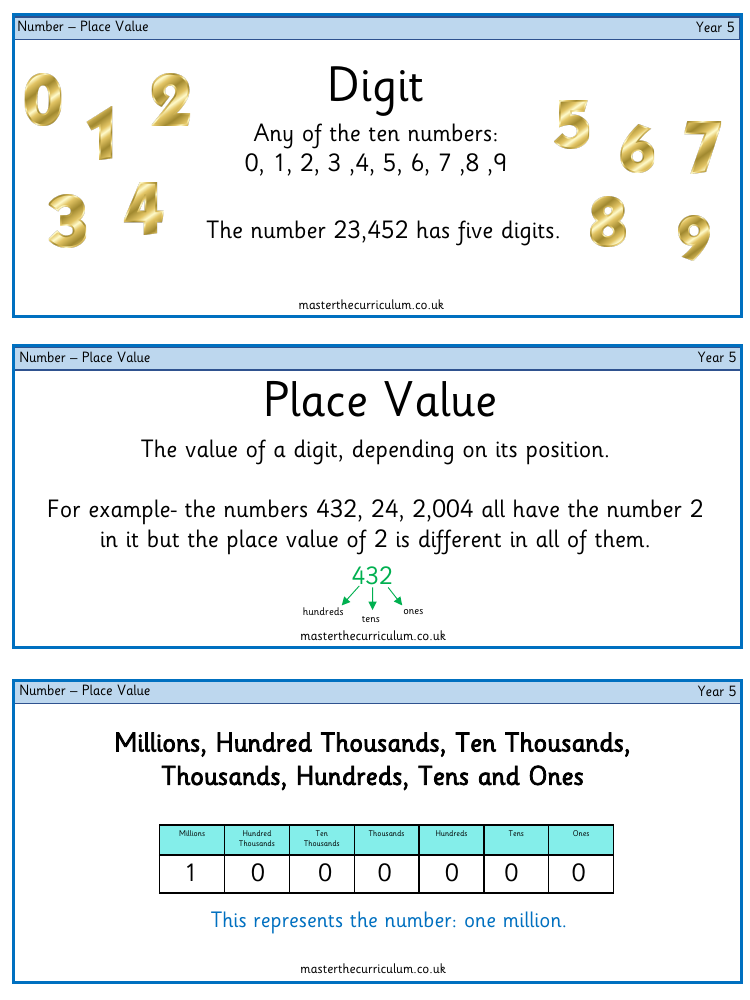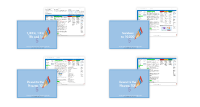Place value - Vocabulary

Maths Resource Description
The term 'digit' refers to any of the ten symbols from 0 to 9 that are the building blocks of our number system. Understanding 'place value' is crucial; it determines the value of a digit based on its position within a number. For instance, in various numbers like 432, 24, and 2,004, the digit '2' holds different place values. A number such as 23,452 is said to have five digits. These digits can represent different values such as hundreds, tens, and ones, and can extend to millions, hundred thousands, and so on, as seen in the number one million, written as 1,000,000. In Year 5, students are introduced to these concepts to master the curriculum.
Numerals are the symbols or names that represent numbers, such as '7', 'ten', '15', and 'eleven'. When comparing numbers, we assess whether they are greater, lesser, or equal to each other. Sequences are lists of numbers following specific patterns or rules, where each number is termed a 'term' of the sequence. The concept of integers encompasses whole numbers, which can be positive or negative, like 4, 78, 124, or -34. Students learn various strategies for calculations, such as partitioning numbers into smaller parts, using pictorial representations, and employing place value counters. Mastery of these concepts is demonstrated through the ability to round numbers to the nearest ten, hundred, thousand, or even hundred thousand, and understanding multiples and approximations, which are integral parts of the Year 5 place value curriculum.


